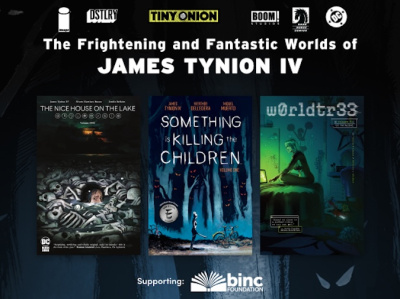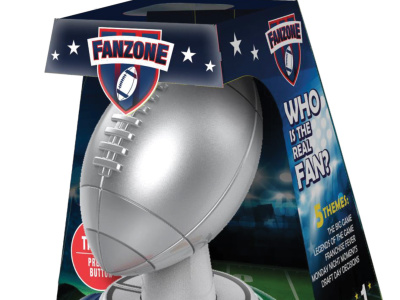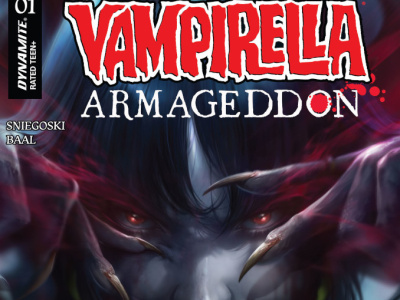
A panel to recall Phil Seuling and his early New York comic conventions, the first conventions with a national draw, was held in conjunction with the 2008 New York Comic Con. ICv2’s Milton Griepp moderated the panel with film producer Michael Uslan; Greg Goldstein, most recently VP-Entertainment at Upper Deck; Diamond’s VP Purchasing Bill Schanes; and DC Comics CEO and Publisher, Paul Levitz. In Part 3, panelists share their favorite
Milton Griepp:
Next I’d like to have our panelists share one or more of their favorite New York Comic Con moments, whether it was historically important, or meeting an artist, or just something that was personally important.
Paul Levitz:
This is, I think, an entertaining story--an important moment in my education. To give you a sense of difference… At the time: there was no Artist Alley, per se. There were one or two artists who would deign to do a sketch for you for something. This would be ’71. Neal Adams was at perhaps at the first crest of his career (he’s had several), doing things like Green Lantern, Green Arrow. I got him to do a sketch of Superman, a very, very quick sketch, just sort of a Superman head, for the enormous sum of $6, and as a young kid then immediately ran it on my fanzine two or three months later as the cover. I got an energetic lecture from Mr. Adams educating me on the difference between original art purchase price and reproduction right purchase price, which is something that has served me well in my understanding over the years, as I started to learn that original art should be returned to artists in the deal.
Bill Schanes:
My first show was that booth in ’71. I was from the wrong part of the world as far as Phil was concerned because all things revolved around
Levitz:
Was Bud [Plant] pushed as far back? Because Bud was always sort of a favorite from the coast. He’d crash at Phil’s house.
Schanes:
They were friends before I was around, friends by ’68 or ’69. He’s the other really legendary early figure, the west coast version of Phil, but he didn’t have the direct market connections like Phil did.
I remember talking to Phil. I was literally a teenager, and Phil was a very imposing fellow, in voice, and he looked down at you with those big bushy eyebrows and you knew you were going to melt as he yelled at you (with love and affection). I tried to explain that I had spent 23 cents a gallon to get here, and I’m sleeping in the car at night, so I really need a good booth location. He says, “Look, kid. You’re right in the corner; the next spot is out in the hallway.” These are my choices. “Yes, Phil, I’m glad to have a space in your fine convention”… even though I booked this space months and months in advance.
He scared the bejeebers out of me for years because he was such a big guy and I was such a little pipsqueak. I was thin and little, and he was very imposing. But really he was a very affectionate person once you knew him. And took us under his wing and really shepherded a lot of us. He took me to his house that night (even though he crushed me during the day at the show), and I saw the wonderment of his house and his community.
Levitz:
That was in Seagate already?
Schanes:
Maybe. I don’t know.
Levitz:
No… I guess that would have been the next trip, because then he would have still been on
Schanes:
He had art work. He had all the key pieces, which was pretty spectacular. When you realize he had stuff from the ’30 and ‘40s… pretty spectacular.
Greg Goldstein:
I have two favorite memories. One is how I finally was able to deal with the whole intimidation factor. I think I’m probably the youngest on the panel, therefore I was the littlest kid at the shows, and Phil, as you’ve heard a number of times, was an imposing figure, and could do that “If you don’t like your table you can just pack up and leave” kind of thing. We all had to get used to that.
My parents were very nice, they would drive me in, we’d unload the boxes, they’d go do whatever they wanted to do in the city, and then pick us up at the end of the day. But I do remember the breakthrough came for me. I don’t know if Paul remembers this, but Joey Cavelieri who lived in
Phil started to warm up.
And then I noticed after time that my table spots got slightly better
I thought to myself, “I’ve broken through, I’ve done ok. That was at the monthly show, which I remember being very inexpensive, compared to the actual
Levitz:
$10 sticks in my mind.
Goldstein:
You’re thinking, “Where am I going to get that kind of money? There goes my whole profit.”
So that’s one story. The other one, I’m hoping Paul or Michael or someone can help fill in the blanks. At one of the monthlies, I recall Phil being arrested because of the obscene comics (quote, unquote), which were the underground comics. That was at one the hotels where we had two rooms. We had a front room and we had a second room that day, maybe it expanded beyond the main room. And I happened to be in the front room where Phil was. Paul used the term “educational,” and that was quite an education for me, because some guy just got arrested for selling comic books.
What was the ultimate outcome of that?
Levitz:
It was very sad. Because he was an English teacher, the way the system worked (and Phil loved the pure teaching--the same thing we’re talking about with the reaction to the kids was his attitude in the classroom), he was put on desk duty, by the Board of Ed, at Livingston Street for a year or maybe two years, until he gave it up. That’s really what moved him into full time distribution at that point. It was in many ways probably good for the business, because he became more of an entrepreneur as a result, but it certainly was one of the tragedies of his life.
Griepp:
What were the comics?
Levitz:
One of the undergrounds.
Audience:
Zap 4 and Armageddon.*
Levitz:
A sideways story that this reminds me of--not a
When Carol Kalish passed away, about a dozen years ago, not infrequently the major publishers worked together to do memorials. And in that case Marvel had approached us, Terry Stewart was running the place. It didn’t quite work out for the space we had, and Terry was very concerned about where he’d have it. He ended up very coincidentally doing it at the Grand Hyatt in a room that once upon a time had been part of the dealers room for the
Michael Uslan:
In order to get Phil in proper context, let me take you to the years before that. The first comic con I went to was run by a guy named Bernie Bubnis. Understand that I was a 13 year-old, so I’m telling you this through the eyes of a 13 year-old kid from down the shore,
In the early days, at the opening remarks of a convention, like on a Friday, we’d have people like Dave Kaler or John Benson tell us how to behave and present ourselves, and how to dress on some occasions. He said, “There’s going to be press here. There’s going to be TV cameras we’re trying to get in, and it’s really important that people out there in the public take us seriously. So please mind your manners, behave like adults or young adults, and let’s give them the impression that we are actually somewhat intellectual people who are serious about our hobby, and what we’re doing, and our passion.” And they really did present “how to behave” guidelines.
When Phil came in, as I said before, it took a leap in terms of the hotels we were at, the number of dealers, the number of programs that were given. There was a sophistication to it. Because all of the sudden I was going to a con and Stan Lee was there, and Will Eisner was there, and Burne Hogarth was there, and Milton Caniff was there. This was an entirely different level. And the one thing Phil Seuling really brought us as fans and as comic cons was respectability. It was respectability for the fans, it was respectability from the pros, and I think that changed everything forever.
* From Jim Hanley of Hanley’s Universe, who was the audience member who provided the titles: “I have no knowledge of the latter, but I read that the former had already been deemed obscene in another jurisdiction. The bust was arranged for by a priest who ran an organization called Morality in Media. He was on the Today show the next morning, about the time that Phil, Jonni, and another teenage girl who worked at the convention for Phil were being released from jail. The charges were thrown out of court, before the 1973 July Con, where Phil told the whole story in his opening remarks.”
For Part 4, click here.







